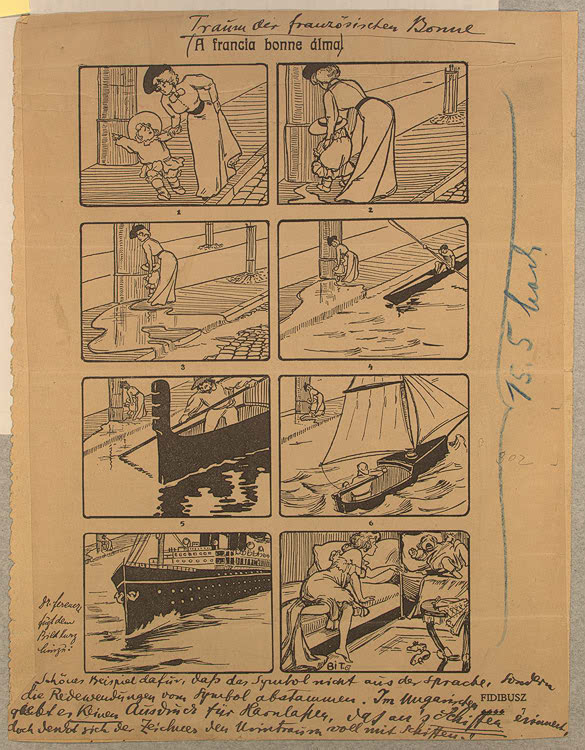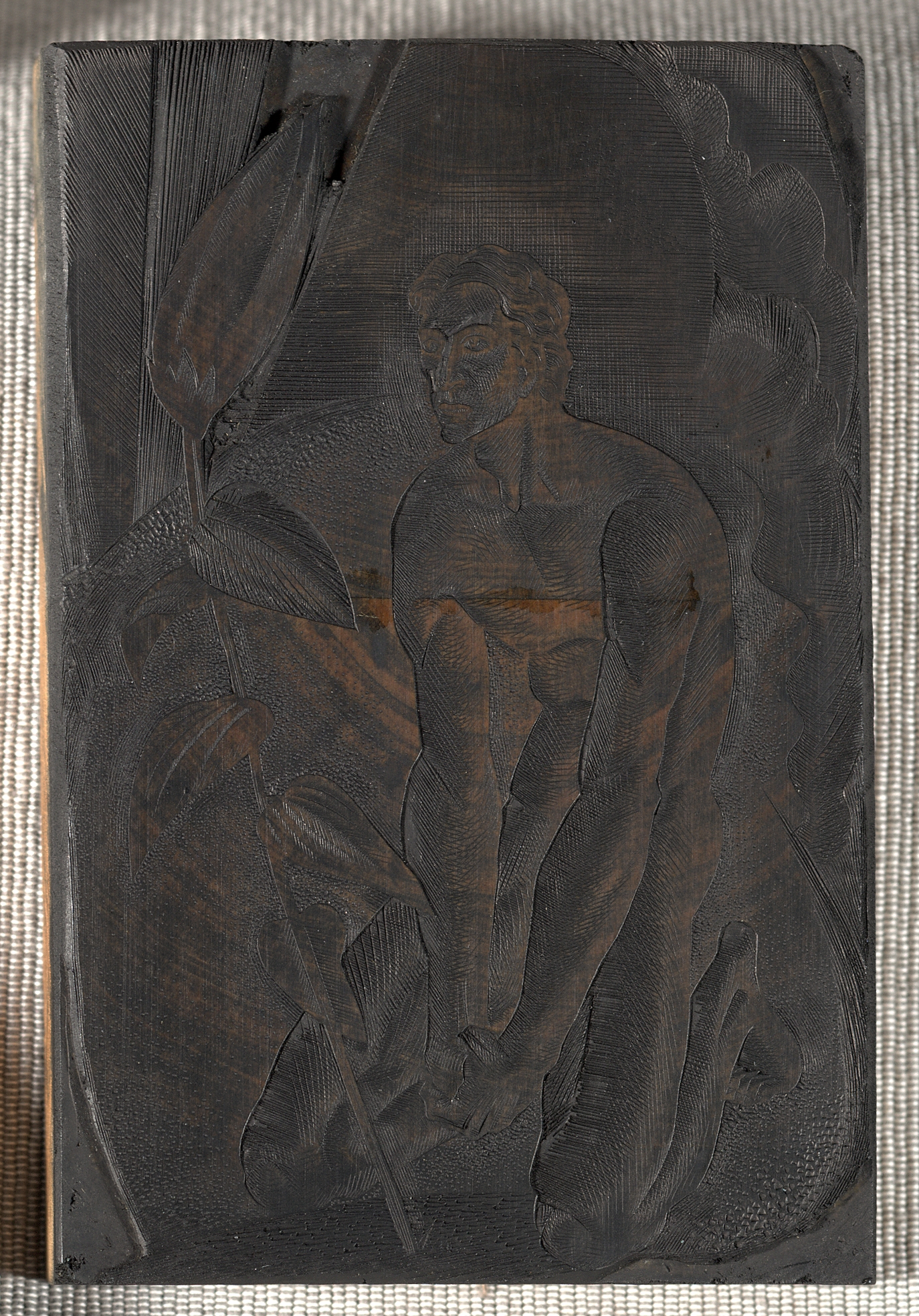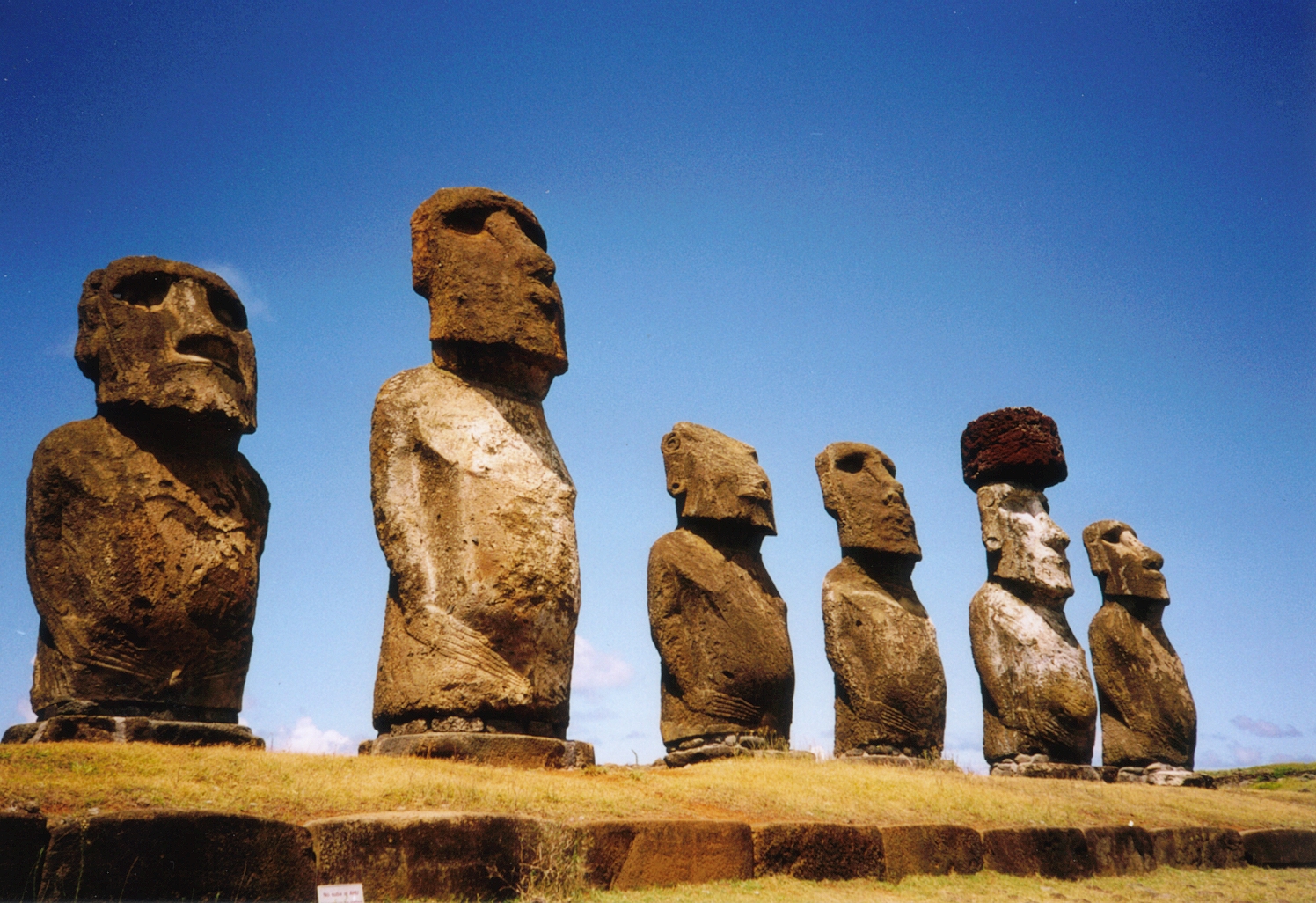|
Une Semaine De Bonté
''Une semaine de bonté'' ("A Week of Kindness") is a collage novel and artist's book by Max Ernst, first published in 1934. It comprises 182 images created by cutting up and re-organizing illustrations from Victorian encyclopedias and novels. History The earliest comics by Ernst, ''Répétitions'' and ''Les malheurs des immortels'', date from 1922, the year the artist moved to Paris. They were created in collaboration with poet Paul Eluard. Ernst went on to produce numerous comic-based paintings, and more comic books. The largest and most important before ''Une semaine de bonté'' were ''La femme 100 têtes'' (1929) and ''Rêve d'une petite fille qui voulut entrer au carmel'' (1930). ''Une semaine de bonté'' was completed in 1933 in just three weeks, during a visit to Italy. A few of Ernst's sources were identified: these include illustrations from an 1883 novel by Jules Mary, ''Les damnées de Paris'', and possibly a volume of works by Gustave Doré Ernst purchased in Mi ... [...More Info...] [...Related Items...] OR: [Wikipedia] [Google] [Baidu] |
Max Ernst
Max Ernst (2 April 1891 – 1 April 1976) was a German (naturalised American in 1948 and French in 1958) painter, sculptor, printmaker, graphic artist, and poet. A prolific artist, Ernst was a primary pioneer of the Dada movement and Surrealism in Europe. He had no formal artistic training, but his experimental attitude toward the making of art resulted in his invention of frottage (surrealist technique), frottage—a technique that uses pencil rubbings of textured objects and relief surfaces to create images—and Grattage (art), grattage, an analogous technique in which paint is scraped across canvas to reveal the imprints of the objects placed beneath. Ernst is noted for his unconventional drawing methods as well as for creating novels and pamphlets using the method of collages. He served as a soldier for four years during World War I, and this experience left him shocked, traumatised and critical of the modern world. During World War II he was designated an "undesirable forei ... [...More Info...] [...Related Items...] OR: [Wikipedia] [Google] [Baidu] |
Lion Of Belfort
The ''Lion of Belfort'', in Belfort, France, is a monumental sculpture by Frédéric Auguste Bartholdi, the sculptor of the Statue of Liberty (''Liberty Enlightening the World''). Overview Finished in 1880, it is made entirely of red sandstone. The blocks it is made from were individually sculpted, then moved under Belfort castle to be assembled. Twenty-two meters in length and 11 meters in height, the colossal work dominates the local landscape. The lion symbolizes the heroic French resistance during the Siege of Belfort, a 103-day Prussian assault (from December 1870 to February 1871). The city was protected from 40,000 Prussians by merely 17,000 men (of whom only 3,500 were from the military) led by Colonel Denfert-Rochereau. Instead of facing Prussia to the east as was intended, the statue was turned the other way following German protests. [...More Info...] [...Related Items...] OR: [Wikipedia] [Google] [Baidu] |
Photocomics
Photo comics are a form of sequential storytelling that uses photographs rather than illustrations for the images, along with the usual comics conventions of narrative text and word balloons containing dialogue. They are sometimes referred to in English as fumetti, photonovels, photoromances, and similar terms. The photographs may be of real people in staged scenes, or posed dolls and other toys on sets. Although far less common than illustrated comics, photo comics have filled certain niches in various places and times. For example, they have been used to adapt popular film and television works into print, tell original melodramas, and provide medical education. Photo comics have been popular at times in Italy and Latin America, and to a lesser extent in English-speaking countries. Terminology The terminology used to describe photo comics is somewhat inconsistent and idiosyncratic. ''Fumetti'' is an Italian word (literally "little puffs of smoke", in reference to word balloon ... [...More Info...] [...Related Items...] OR: [Wikipedia] [Google] [Baidu] |
Pantomime Comics
Silent comics (or pantomime comics) are comics which are delivered in mime. They make use of little or no dialogue, speech balloons or captions written underneath the images. Instead, the stories or gags are told entirely through pictures. Definition Silent comics have the advantage of being easily understandable to people - like children - who are slow readers. The genre is also universally popular since translation is not required, lacking the usual language barriers. Sergio Aragonés, a famous artist in the field, once said in a 1991 interview with Comics Journal: "What happens is like a supersimplification. Something you can say with words, you have to eliminate all the words until it can be told in a little story without words. You just think a little longer. But it becomes rewarding in the end because everybody can understand your cartoons no matter what your nationality. And that, to me, has been always a big thing—to do cartoons that everybody can understand, every age, ev ... [...More Info...] [...Related Items...] OR: [Wikipedia] [Google] [Baidu] |
Wordless Novels
The wordless novel is a narrative genre that uses sequences of captionless pictures to tell a story. As artists have often made such books using woodcut and other relief printing techniques, the terms woodcut novel or novel in woodcuts are also used. The genre flourished primarily in the 1920s and 1930s and was most popular in Germany. The wordless novel has its origin in the German Expressionist movement of the early 20th century. The typically socialist work drew inspiration from medieval woodcuts and used the awkward look of that medium to express angst and frustration at social injustice. The first such book was the Belgian Frans Masereel's ''25 Images of a Man's Passion'', published in 1918. The German Otto Nückel and other artists followed Masereel's example. Lynd Ward brought the genre to the United States in 1929 when he produced , which inspired other American wordless novels and a parody in 1930 by cartoonist Milt Gross with ''He Done Her Wrong''. Following a ... [...More Info...] [...Related Items...] OR: [Wikipedia] [Google] [Baidu] |
Artists' Books
Artists' books (or book arts or book objects) are works of art that utilize the form of the book. They are often published in small editions, though they are sometimes produced as one-of-a-kind objects. Overview Artists' books have employed a wide range of forms, including the traditional Codex form as well as less common forms like scrolls, fold-outs, concertinas or loose items contained in a box. Artists have been active in printing and book production for centuries, but the artist's book is primarily a late 20th-century form. Book forms were also created within earlier movements, such as Dada, Constructivism, Futurism, and Fluxus. Artists' books are made for a variety of reasons. An artist book is generally interactive, portable, movable and easily shared. Some artists books challenge the conventional book format and become sculptural objects. Artists' books may be created in order to make art accessible to people outside of the formal contexts of galleries or museums. Ar ... [...More Info...] [...Related Items...] OR: [Wikipedia] [Google] [Baidu] |
1934 In Comics
Events and publications January * January 7: Alex Raymond's ''Flash Gordon'' and ''Jungle Jim'' makes their debut. ''Flash Gordon'' wil run until 2003, while ''Jungle Jim'' lasts until 1954. * January 22: Alex Raymond's ''Secret Agent X-9'' makes its debut and will run until 1996. The original stories are written by famous detective writer Dashiel Hammett. February * February - August: Hergé's ''Popol Out West'' is serialized in ''Le Petit Vingtième''. March * March 4: The final episode of ''Bucky Bug'' as part of the ''Silly Symphony'' feature is published. * March 5: Frank Victor Martinek's ''Don Winslow of the Navy'' makes its debut. It will run until 30 July 1955. * March 19: Will Gould's ''Red Barry'' makes its debut. April * April: David Low's ''Colonel Blimp'' makes his debut. May * Zeke Wolf and the three little pigs debut in comics, in a Tom Wood's table for the magazine '' Good Housekkeping''. June * June 11: Lee Falk and Fred Fredericks's ''Mandrake ... [...More Info...] [...Related Items...] OR: [Wikipedia] [Google] [Baidu] |
1934 Books
Events January–February * January 1 – The International Telecommunication Union, a specialist agency of the League of Nations, is established. * January 15 – The 8.0 1934 Nepal–Bihar earthquake, Nepal–Bihar earthquake strikes Nepal and Bihar with a maximum Mercalli intensity scale, Mercalli intensity of XI (''Extreme''), killing an estimated 6,000–10,700 people. * January 26 – A 10-year German–Polish declaration of non-aggression is signed by Nazi Germany and the Second Polish Republic. * January 30 ** In Nazi Germany, the political power of federal states such as Prussia is substantially abolished, by the "Law on the Reconstruction of the Reich" (''Gesetz über den Neuaufbau des Reiches''). ** Franklin D. Roosevelt, President of the United States, signs the Gold Reserve Act: all gold held in the Federal Reserve is to be surrendered to the United States Department of the Treasury; immediately following, the President raises the statutory gold price from ... [...More Info...] [...Related Items...] OR: [Wikipedia] [Google] [Baidu] |
Moai
Moai or moʻai ( ; es, moái; rap, moʻai, , statue) are monolithic human figures carved by the Rapa Nui people on Easter Island, Rapa Nui in eastern Polynesia between the years 1250 and 1500. Nearly half are still at Rano Raraku, the main moai quarry, but hundreds were transported from there and set on stone platforms called Ahu (Easter Island), ahu around the island's perimeter. Almost all moai have overly large heads, which comprise three-eighths the size of the whole statue - which has no legs. The moai are chiefly the living faces (''aringa ora'') of deified ancestors (''aringa ora ata tepuna''). The statues still gazed inland across their clan lands History of Easter Island#European contacts, when Europeans first visited the island in 1722, but all of them had fallen by the latter part of the 19th century. The moai were toppled in the late 18th and early 19th centuries, possibly as a result of European contact or endemic warfare, internecine tribal wars. The production a ... [...More Info...] [...Related Items...] OR: [Wikipedia] [Google] [Baidu] |
Easter Island
Easter Island ( rap, Rapa Nui; es, Isla de Pascua) is an island and special territory of Chile in the southeastern Pacific Ocean, at the southeasternmost point of the Polynesian Triangle in Oceania. The island is most famous for its nearly 1,000 extant monumental statues, called ''moai'', which were created by the early Rapa Nui people. In 1995, UNESCO named Easter Island a World Heritage Site, with much of the island protected within Rapa Nui National Park. Experts disagree on when the island's Polynesian inhabitants first reached the island. While many in the research community cited evidence that they arrived around the year 800, there is compelling evidence presented in a 2007 study that places their arrival closer to 1200. The inhabitants created a thriving and industrious culture, as evidenced by the island's numerous enormous stone ''moai'' and other artifacts. However, land clearing for cultivation and the introduction of the Polynesian rat led to gradual deforest ... [...More Info...] [...Related Items...] OR: [Wikipedia] [Google] [Baidu] |
Lion
The lion (''Panthera leo'') is a large Felidae, cat of the genus ''Panthera'' native to Africa and India. It has a muscular, broad-chested body; short, rounded head; round ears; and a hairy tuft at the end of its tail. It is sexually dimorphic; adult male lions are larger than females and have a prominent mane. It is a social species, forming groups called ''prides''. A lion's pride consists of a few adult males, related females, and cubs. Groups of female lions usually hunt together, preying mostly on large ungulates. The lion is an apex predator, apex and keystone predator; although some lions scavenge when opportunities occur and have been known to hunt Human, humans, lions typically don't actively seek out and prey on humans. The lion inhabits grasslands, savannas and shrublands. It is usually more diurnality, diurnal than other wild cats, but when persecuted, it adapts to being active nocturnality, at night and crepuscular, at twilight. During the Neolithic period, the li ... [...More Info...] [...Related Items...] OR: [Wikipedia] [Google] [Baidu] |







